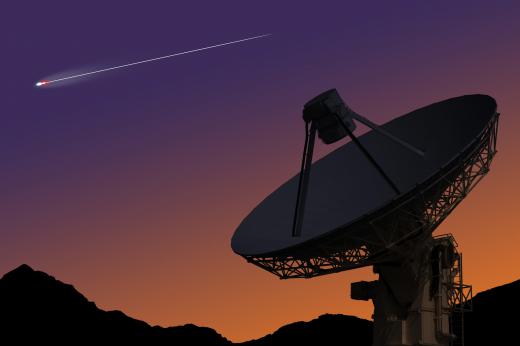What is the Triangulum Galaxy?
 Michael Anissimov
Michael Anissimov
The Triangulum Galaxy is a mid-sized galaxy located approximately 3 million light years away in the constellation Triangulum, the triangle. It is the most distant object visible with the unaided eye, and can be sighted only in very dark skies. Also referred to as Messier 33 or NGC 59, Triangulum is sometimes incorrectly referred to as the Pinwheel Galaxy, but another, larger galaxy already bears this name. Triangulum is sometimes confused with NGC 752, a nearby open cluster with greater luminosity from our vantage point.
The arms of Triangulum only extend about a half-turn around the galaxy at most, giving the arms a "twist factor" similar to those of the Milky Way. Triangulum is a member of the Local Group of gravitationally bound galaxies, the largest of which are the Milky Way and the Andromeda Galaxy. The nearby Pisces Dwarf Galaxy may be a satellite galaxy of Triangulum, and Triangulum itself may be a gravitationally bound companion of Andromeda. Out of a couple dozen galaxies in the Local Group, Triangulum, the Milky Way, and the Andromeda Galaxy are the only three spiral galaxies. Triangulum is closer to Andromeda than it is to the Milky Way, being separated from the latter by only a million or so light years.

Although the Triangulum Galaxy is visible with the naked eye under ideal conditions, no pre-telescopic observer notes its existence. This may be because galaxies tend to be more fuzzy and indistinct than stars and planets, not to mention far less luminous.
The Triangulum Galaxy is known for having one of the most fantastic H II regions out of any known galaxy, with a diameter of 1500 light years. An H II region is a large cloud of ionized gas that serves as a stellar nursery. Stars are created in dense portions of H II regions called Bok globules, after the astronomer that first theorized they were the birthplaces of stars.
AS FEATURED ON:
AS FEATURED ON:












Discuss this Article
Post your comments